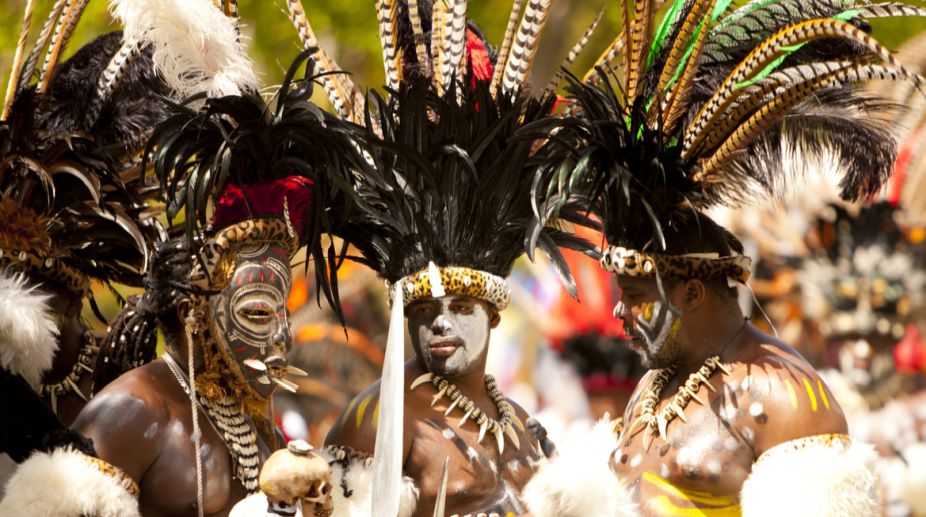Latest episode of Tory pyschodrama
The elevation of Rishi Sunak to 10 Downing Street may fall substantially short of the momentousness of Barack Obama’s 2008 triumph — after all, it isn’t based on any mandate.

(Photo: Getty Images)
Jawaharlal Nehru, India’s first Prime Minister, once said, “Delhi is the political capital of India; Bombay the commercial capital; Calcutta the cultural capital; and Madras the intellectual capital of India.” While Durga Puja is just over, Diwali festival is soon going to grip the entire country. Yet in the far away in the Caribbean islands of Trinidad and Tobago, the celebrations are already on for the month-long Calypso festival.
With a high-degree of cultural consciousness, one is tempted to feel that the day of Bangla calypso may not be a distant dream. Calypso is being celebrated in October as History Month in the twin Caribbean islands of Trinidad and Tobago. Celebrations showcase why this indigenous folk music means so much to the region.
It calls for a deep study to find the origin, its entry in the Caribbean and its phenomenal popularity in attaining national and social importance. With a beginning in Greek mythology, calypso has transcended mundane barriers of caste, creed and colour to emerge as a colourful ethos of the Caribbean nations.
Advertisement
Calypso in the context of Caribbean cricket prompted author to write aptly, “Cricket in this part of the world, as nowhere else, represents the natural gaiety of the islanders, the rhythm of Calypso and the punch of rum”. InTrinidad and Tobago, the Unified Calypsonians Organisation is projecting the crucial role of Calypso in the various facets of Caribbean life. With this objective in mind, the Tuco has planned to celebrate the Calypso History Month in October with a series of exhibitions, lectures, seminars and workshops together with live calypso musical performances. Elaborating the point, Lutalo Masimba, the president of Tuco says.
“Calypso is alive. Calypso is the rhythm of West Indian life. It is people’s newspaper showcasing the Caribbean history.” Calypso had a political role as well, a vehicle of rebellion and the voice of the masses against the masters. In course of time, it became the mass movement for self rule, sweeping across the Caribbean. In this context, Dr Gordon Rohlehr, emeritus professor of literature at the University of the West Indies, has pinpointed the role of calypsonian Slinger Francisco (the Mighty Sparrow) who challenged colonialism through his musical creations.
Another teacher, Dr Hollis Liverpool has sung and highlighted calypso’s role in both ritual and rebellion. The calypsonians went through a period of trial and tribulations during the colonial period as a pioneer calypsonian, the Growling Tiger (Neville Marcano) faced censorship. The situation did not change even after independence as Blue Boy’s “Soca Baptiste” faced a ban from religious leaders on account of its blasphemous contents. Despite odds staked against it, the calypso and calypsonians have emerged triumphant.
Coming back to calypso music, it was a 17th century creation in the Caribbean island of Trinidad. It was an export from the West African Kaiso and canboulay music by the African slaves shipped to the Caribbean to work on sugar plantations. The slaves’ connection with their homeland was aborted and even their mutual talking was banned. Sadly! Slaves were forced to observe more “fasts of silence” (maun vrats) than Mahatma Gandhi.
Consequently, calypso became a medium of spreading news across the island. This unique vehicle of communication was not only used to transmit news but also championed the cause of free speech and raising voice against political corruption. It invited censorship and songs were scanned for rebellious contents. Calypso is a type of folk song primarily from Trinidad, though sung elsewhere in the eastern and southern islands of the West Indies. The subject is usually witty and satirical, dwelling on topical political and social events.
The tone is of allusion, mockery and double entendre. Calypso songs were critical of Adolph Hitler’s role in invading Poland and the British policy of discrimination. Such a period of despair and distress provided an ideal platform for the birth and growth of calypso. Calypso moved on to the road of modernity in the 19th century, resulting in the confluence of masquerade song, French Creole and the chant well.
The introduction of Carnival by the French in Trinidad led to stiff calypso competition which coincided with the abolition of slavery in 1834. In Trinidad and Tobago, Guyana, Jamaica, and Suriname, Chutney soca is a hybrid style of popular music incorporating Soca elements accompanied by the Hindi-English, Hinglish and Bhojpuri lyrics.
The Indian component of calypso is Chutney music, with support from Indian instruments such as the dholak, majeera and dhantal. Calypso’s popularity has taken it to Latin America as well. Cumbia (kumbja) is a danceoriented music genre popular throughout Latin America. It began on a romantic note as a courtship dance practiced among the African population on the Caribbean coasts of Colombia and Panama. Once established in the Caribbean, calypso darted across all the way to Sri Lanka and Goa, courtesy the Portuguese colonisers involved in slave trade.
An iconic Tamil singer Nithi Kanagaratnam has opened up a new vista for calypso in Tamil (Baila) in the Emerald Island to earn the epithet of “Father of Tamil Pops”.These songs are popular among the Tamil speaking people the world over. May be after Sri Lanka and Goa, Bengal could be the next outpost for Calypso.
From Caribbean Calypso to Portuguese (Bayila to dance), Sinhala and Tamil (Baila) Calypso and the finally the Bangla(Baila) Calypso could be last outpost for this cornerstone of Caribbean culture. The writer is a long-time West Indies cricket fan who was in Trinidad (his second home) on 27 June to celebrate his 80th birthday with his Caribbean (Rickhi) family and friends.
Advertisement